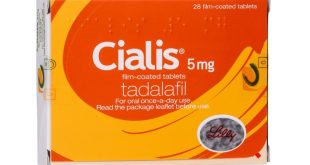Recognizing stroke warning signs early can save lives and minimize long-term damage. At Er Of Dallas, we prioritize awareness and immediate care for stroke patients, providing advanced diagnostic and treatment services to our community.
What Is a Stroke?
A stroke occurs when blood flow to the brain is interrupted or reduced, preventing brain tissue from receiving essential oxygen and nutrients. This leads to the rapid death of brain cells, making early intervention critical.
Types of Stroke:
- Ischemic Stroke: Caused by a blockage in an artery supplying blood to the brain.
- Hemorrhagic Stroke: Occurs when a blood vessel in the brain bursts.
- Transient Ischemic Attack (TIA): A temporary blockage, also known as a mini-stroke.
Early Stroke Warning Signs
Recognizing stroke warning signs can make the difference between recovery and severe disability. Symptoms may include:
FAST Method:
- F – Face Drooping: One side of the face droops or feels numb.
- A – Arm Weakness: Inability to lift one arm fully.
- S – Speech Difficulty: Slurred speech or inability to speak.
- T – Time to Call 911: Immediate action is crucial.
Additional Symptoms:
- Sudden numbness or weakness in the face, arm, or leg, especially on one side.
- Confusion or trouble understanding speech.
- Difficulty seeing in one or both eyes.
- Loss of balance, dizziness, or lack of coordination.
- Severe headache with no known cause.
-
What Is a Stroke?
A stroke occurs when blood flow to the brain is interrupted or reduced, preventing brain tissue from receiving essential oxygen and nutrients. This leads to the rapid death of brain cells, making early intervention critical.
Types of Stroke:
- Ischemic Stroke: Caused by a blockage in an artery supplying blood to the brain.
- Hemorrhagic Stroke: Occurs when a blood vessel in the brain bursts.
- Transient Ischemic Attack (TIA): A temporary blockage, also known as a mini-stroke.
Early Stroke Warning Signs
Recognizing stroke warning signs can make the difference between recovery and severe disability. Symptoms may include:
FAST Method:
- F – Face Drooping: One side of the face droops or feels numb.
- A – Arm Weakness: Inability to lift one arm fully.
- S – Speech Difficulty: Slurred speech or inability to speak.
- T – Time to Call 911: Immediate action is crucial.
Additional Symptoms:
- Sudden numbness or weakness in the face, arm, or leg, especially on one side.
- Confusion or trouble understanding speech.
- Difficulty seeing in one or both eyes.
- Loss of balance, dizziness, or lack of coordination.
- Severe headache with no known cause.
When to Seek Emergency Care
If you or someone you know exhibits stroke warning signs, call 911 immediately. At Er Of Dallas, our emergency room is equipped with state-of-the-art technology to provide rapid diagnosis and treatment, ensuring the best possible outcomes.
Causes and Risk Factors of Stroke
Understanding what increases the likelihood of a stroke can help with prevention. Common causes and risk factors include:
- High Blood Pressure: The leading cause of stroke.
- Heart Disease: Conditions like atrial fibrillation increase risk.
- Diabetes: Damages blood vessels and increases clotting risk.
- Smoking: Harms blood vessels and accelerates plaque buildup.
- Obesity and Sedentary Lifestyle: Linked to high blood pressure and diabetes.
- Family History: Genetic predisposition to stroke.
Prevention Tips
Lower your risk of stroke by making healthy lifestyle choices:
- Manage Blood Pressure: Regular monitoring and medication, if needed.
- Maintain a Healthy Diet: Focus on fruits, vegetables, lean proteins, and whole grains.
- Exercise Regularly: Aim for at least 30 minutes of moderate activity most days.
- Quit Smoking: Seek support to stop smoking for good.
- Control Diabetes: Keep blood sugar levels in check.
- Limit Alcohol Intake: Drink in moderation.
Diagnostic Tests for Stroke
At Er Of Dallas, we use advanced diagnostic tools to determine the type and severity of a stroke:
- CT Scan: Provides detailed images of the brain to detect bleeding or blockages.
- MRI: Identifies damaged brain tissue.
- Carotid Ultrasound: Checks for blockages in neck arteries.
- Blood Tests: Measure clotting factors, cholesterol, and blood sugar levels.
- Cerebral Angiogram: Visualizes blood vessels in the brain.
Treatment Options for Stroke
Treatment depends on the type of stroke:
For Ischemic Stroke:
- Clot-Busting Medications: Administered to dissolve clots.
- Mechanical Thrombectomy: Removal of the clot using a specialized device.
- Antiplatelet and Anticoagulant Medications: Prevent further clots.
For Hemorrhagic Stroke:
- Surgical Clipping or Coiling: Stops bleeding from a ruptured blood vessel.
- Blood Pressure Management: Lowers the risk of further bleeding.
Stroke Rehabilitation
Recovery after a stroke requires a comprehensive approach, including:
- Physical Therapy: Regain strength and mobility.
- Speech Therapy: Improve communication skills.
- Occupational Therapy: Relearn daily activities.
- Emotional Support: Address mental health challenges.
At Er Of Dallas, we guide patients through every stage of their recovery journey.
FAQs About Stroke Warning Signs
1. What is the most common warning sign of a stroke?
The most common sign is sudden numbness or weakness on one side of the body.
2. Can young people have strokes?
Yes, strokes can occur at any age, although risk increases with age.
3. How can I prevent a stroke?
Adopt a healthy lifestyle, manage chronic conditions, and avoid smoking.
4. Is a TIA the same as a stroke?
No, a TIA is a temporary blockage that resolves on its own but serves as a warning for future strokes.
5. What should I do if I suspect someone is having a stroke?
Call 911 immediately and note the time symptoms started.
Why Choose Er Of Dallas?
At Er Of Dallas, we are committed to providing top-tier care for stroke patients. Our advantages include:
- 24/7 Emergency Services: Immediate response for critical cases.
- Advanced Diagnostic Tools: Accurate and rapid stroke assessment.
- Experienced Medical Team: Skilled professionals trained in stroke care.
- Comprehensive Rehabilitation Support: Guiding patients toward recovery.
For more Blogs visit https://dailybloggernews.com/
For more Blogs visit https://dailybloggernews.com/







